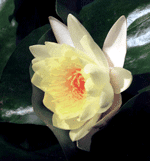"Simple persons live within the happiness of their inner world."-- Transformation by R. Johnson
In most every spiritual tradition there is a sense of growing maturity, a ripening of the self into what some call satori, enlightenment or salvation, among other descriptions of this experience. Author and Jungian psychologist Robert Johnson discusses this in his book, Transformation.
He writes there are three levels of consciousness. They are universal the world over, yet in industrialized societies the progression of these experiences is made all the more difficult by our very advances in book learning and complex societies. The level of all mankind, endowed to each of us by nature is what he describes as 'simple consciousness,' followed by 'complex consciousness,' the "usual state of educated Western man, and an 'enlightened' state of consciousness, known only to a very few individuals."
Enlightenment, Johnson reckons, comes to very few men only after much work and training by highly motivated individuals. He recounts a simple story to illustrate these notions: 'the simple man comes home in the evening wondering what's for dinner; the complex man comes home pondering the imponderables of fate, and the enlightened man comes home wondering what's for dinner.
"Simple man and enlightened man have much in common, including a direct, uncomplicated view of life, and so they react in similar ways."
The difference between them is that the enlightened are conscious of their condition in ways that simple persons are not. Complex persons, however, are often engaged with worry and often live lives marked by anxiety.
Writing Walden Pond, 19th century author Henry David Thoreau writes about his experiences and those of others he knows. He chronicles the complex, Western man's attempt to regain a sense of simplicity in their life.
Gandhi urged India in an earlier era to retain its domestic simplicity; his urgings were largely ignored. Today when one travels to India we are often aware of the tremendous poverty, illness and wants of her citizens. All true. However alongside of these ills is a clear and abundant sense of joyfulness. There is a happiness among large numbers of Indians in their daily lives. Johnson writes of his experiences there, "I was witnessing the miracle of simple man finding happiness in a rich, inner world, not in the pursuit of some desired goal.
Simple persons live within this happiness of their inner world, no matter what the exterior circumstance may be. Those of enlightened conscious also know this and live with an attitude of happiness which bridges their inner world with objective facts, a connection the Simple person does not or is unable to make.
Many a Hindu learns that the highest worship is to simply be happy. On the other hand, complex persons often live in their sense of anxiety and dread, trapped between nostalgia and anticipation of what may come, a fate that mostly eludes ones' grasp.
Despite this, complex consciousness is so highly valued by Westerners that nothing is thought to be too great or expensive in a bid "to gain freedom, self-determination and choices," wrought by his expanded perception writes Johnson.
Traditional Indian society, he observes, is based "on a caste system that allows only a few superior individuals," Brahmins, the chief caste to gain consciousness. The lower castes are less concerned with enlightened minds or methods. This keeps the vast majority of Indians in a state of their natural given, simple consciousness.
For once on the path to enlightenment, many will make significant gains before meeting frustration warned Carl Jung, Johnson's mentor.
Jung noted that once one has left the innate state of simple consciousness for more complex states, one can no longer turn around to retrace the steps of the path from where one has come. Quite simply, he believed that on the path to consciousness, Complex persons may meet with stresses and frustration from which they cannot retire. In other words, Jung believed, one can't just go home again to an earlier simplicity and peace you once knew, in recognition of a certain loss of innocence.
In most every spiritual tradition there is a sense of growing maturity, a ripening of the self into what some call satori, enlightenment or salvation, among other descriptions of this experience. Author and Jungian psychologist Robert Johnson discusses this in his book, Transformation.
He writes there are three levels of consciousness. They are universal the world over, yet in industrialized societies the progression of these experiences is made all the more difficult by our very advances in book learning and complex societies. The level of all mankind, endowed to each of us by nature is what he describes as 'simple consciousness,' followed by 'complex consciousness,' the "usual state of educated Western man, and an 'enlightened' state of consciousness, known only to a very few individuals."
Enlightenment, Johnson reckons, comes to very few men only after much work and training by highly motivated individuals. He recounts a simple story to illustrate these notions: 'the simple man comes home in the evening wondering what's for dinner; the complex man comes home pondering the imponderables of fate, and the enlightened man comes home wondering what's for dinner.
"Simple man and enlightened man have much in common, including a direct, uncomplicated view of life, and so they react in similar ways."
The difference between them is that the enlightened are conscious of their condition in ways that simple persons are not. Complex persons, however, are often engaged with worry and often live lives marked by anxiety.
Writing Walden Pond, 19th century author Henry David Thoreau writes about his experiences and those of others he knows. He chronicles the complex, Western man's attempt to regain a sense of simplicity in their life.
Gandhi urged India in an earlier era to retain its domestic simplicity; his urgings were largely ignored. Today when one travels to India we are often aware of the tremendous poverty, illness and wants of her citizens. All true. However alongside of these ills is a clear and abundant sense of joyfulness. There is a happiness among large numbers of Indians in their daily lives. Johnson writes of his experiences there, "I was witnessing the miracle of simple man finding happiness in a rich, inner world, not in the pursuit of some desired goal.
Simple persons live within this happiness of their inner world, no matter what the exterior circumstance may be. Those of enlightened conscious also know this and live with an attitude of happiness which bridges their inner world with objective facts, a connection the Simple person does not or is unable to make.
Many a Hindu learns that the highest worship is to simply be happy. On the other hand, complex persons often live in their sense of anxiety and dread, trapped between nostalgia and anticipation of what may come, a fate that mostly eludes ones' grasp.
Despite this, complex consciousness is so highly valued by Westerners that nothing is thought to be too great or expensive in a bid "to gain freedom, self-determination and choices," wrought by his expanded perception writes Johnson.
Traditional Indian society, he observes, is based "on a caste system that allows only a few superior individuals," Brahmins, the chief caste to gain consciousness. The lower castes are less concerned with enlightened minds or methods. This keeps the vast majority of Indians in a state of their natural given, simple consciousness.
For once on the path to enlightenment, many will make significant gains before meeting frustration warned Carl Jung, Johnson's mentor.
Jung noted that once one has left the innate state of simple consciousness for more complex states, one can no longer turn around to retrace the steps of the path from where one has come. Quite simply, he believed that on the path to consciousness, Complex persons may meet with stresses and frustration from which they cannot retire. In other words, Jung believed, one can't just go home again to an earlier simplicity and peace you once knew, in recognition of a certain loss of innocence.





